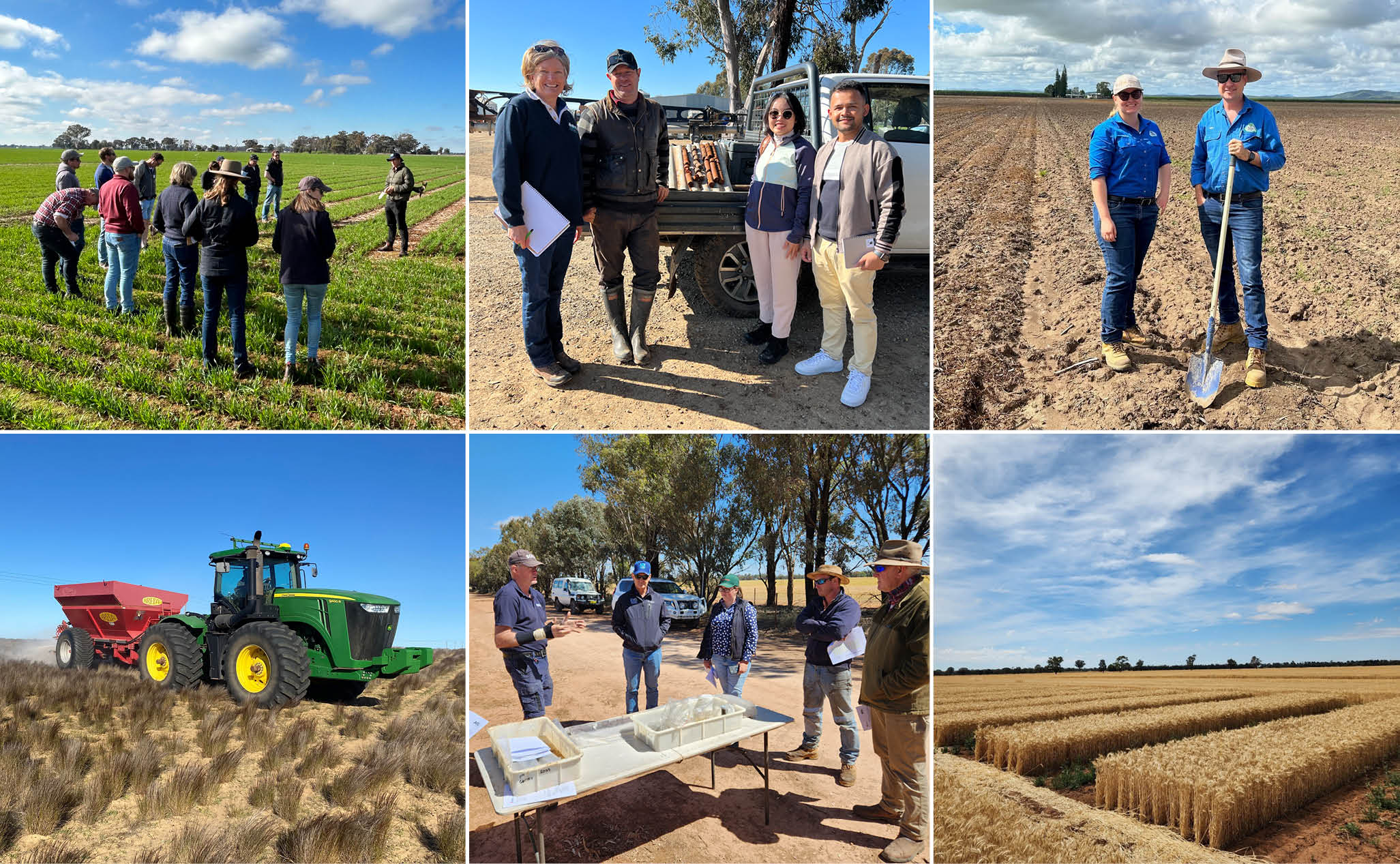Program 4 of the Soil CRC aims to develop cost-effective and sustainable soil management solutions to build more productive and resilient soil. Led by Dr Lukas Van Zwieten from the NSW Department of Primary Industries, the program underpins a dynamic, sustainable, and profitable Australian agriculture sector.
“We’re working with 15 grower groups, seven universities, three government research partners and nine PhD students to deliver innovative soil management techniques, products, data and models that can be used by farmers to better manage their soils,” Dr Van Zwieten said.
“At the moment, our grower group participants and research teams are running 15 field trial sites around the country, focussing on solutions for a range of biological, chemical and physical constraints.”
This includes investigating sodic soil constraints in New South Wales and Queensland, through to field sites in Western Australia, looking at the introduction of clay into the system, mixed species cover cropping and ameliorating other subsoil constraints.
Dr Van Zwieten noted that broad interest in cover cropping, mixed species cropping and intercropping has stemmed from the knowledge that diverse, actively growing, ground cover has multiple benefits, including maximising carbon inputs into soil, through sustaining the soil biological community and contributing to soil physical properties, and protecting the soil from erosion. He also emphasised that it may not be practical in all cases, especially where water usage prior to the cash crop can compromise yield.
“Our field trials in far north Queensland are demonstrating improved resilience of sugarcane soils to compaction stresses, where mixed species cover crops were used instead of bare fallow,” he said. “While in soils in New South Wales and Victoria, cover cropping has improved the physical and biological characteristics of soil, including water infiltration.”
Our researchers installed an extensive array of soil monitoring probes at a winter rainfall field site to quantify and model changes to water storage and drainage, and investigate the water dynamics in rotations with cover crops. This work is further supported by a PhD student who continues to refine models for water use in summer rainfall cover cropping scenarios.
“If we can better understand the water usage by cover crops, where in the soil profile they extract water, we may be able to optimise termination dates for these cover species,” Dr Van Zwieten explained. “It is likely that in dry years cover crops may not be practical, but in wetter years, many opportunities may open up.”
“Cover crops have so far demonstrated benefits to the infiltration of water into soil, likely through improvements to soil physical structure such as aggregation and soil surface properties, with some of these driven by soil biology,” he said.
Finding economically viable solutions for multiple complex soil constraints is challenging. Laboratory, glasshouse, and field trial sites show that these constraints need to be carefully diagnosed before successful amelioration can be achieved.
Dr Van Zwieten said field trial sites on highly calcareous soils on the upper Eyre Peninsula in South Australia have shown that a package of higher seeding rates, increased fertiliser inputs and a fungicidal seed dressing produced the best growth and highest grain yields.
“A bespoke carbon-coated mineral fertiliser that delivered slow-release phosphorus also provided significant benefits to crop production,” he said. “In the southeast of South Australia, foliar application of iron nutrient to address root uptake deficiency was found to significantly improve legume production.”
Field trials in New South Wales and far north Queensland are assessing a range of technologies for enhancing the structure of sodic subsoils to improve root access to water and nutrients.
“These include the subsoil placement of stoichiometrically balanced organic amendments, gypsum and bespoke carbon-coated minerals,” Dr Van Zwieten said. “Soil water sensors are being used to detail the water dynamics at these sites.”
One of our PhD students is also developing new amendments for addressing non-wetting sands and improving our understanding of mechanisms of action.
Field trial sites in Western Australia are evaluating soil management techniques, including organic amendments, deep ripping, application of clay, use of perennial legumes and crop sequences, to increase soil carbon content and crop access to water.
Another Soil CRC PhD student is developing a reverse modelling framework of APSIM (Agricultural Production Systems Simulator) that can predict the plant available water capacity (PAWC) of a soil with moderate accuracy, using only crop yield and management information.
“The predicted PAWC, in combination with other soil and crop data, is being used to train a machine learning model to predict physical and chemical constraints,” Dr Van Zwieten said.
“The team has mapped the availability and accessibility of on-farm data that could be used as inputs for the next generation of decision support platforms focused on diagnosing and ameliorating soil constraints.”
Excitingly, work continues on a computer-based approach to learn from Soil CRC data and public datasets, to find the best ways to manage multiple soil constraints.
“Data from Soil CRC field trials is being standardised for modelling purposes and to ensure that it is findable, accessible, interoperable and reusable.
“This data is being used to develop universal decision support tools that will enable users to access the latest information around soil constraints and some of the best economic outputs from ameliorating these constraints,” Dr Van Zwieten said.
“Over the next three and a half years up to the end of the current CRC, Program 4 will continue to develop tools and techniques that bring together our current understanding of land management, artificial intelligence, soil science, optimisation and big data analytics, and apply it to the key soil types across Australia,” Dr Van Zwieten concluded.
Watch our 2023 Program 4 update
Find out more
Related article: Understanding soil microbial functional resistance and resilience to drought

